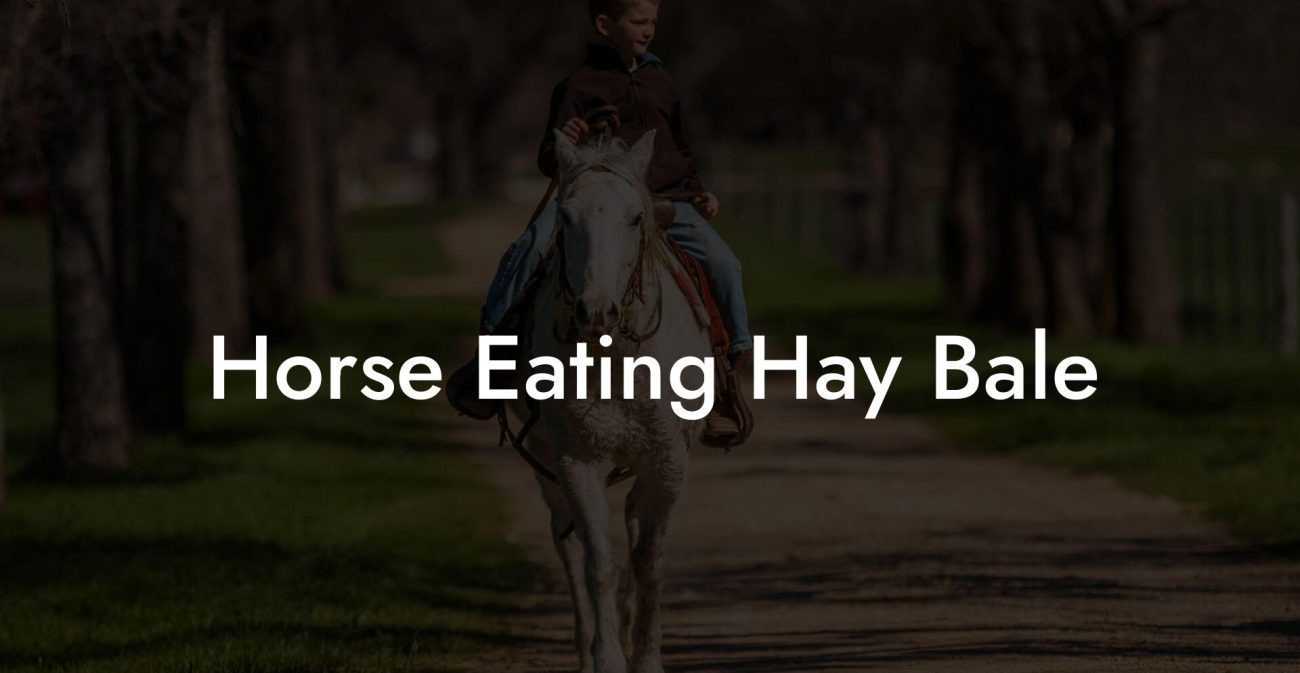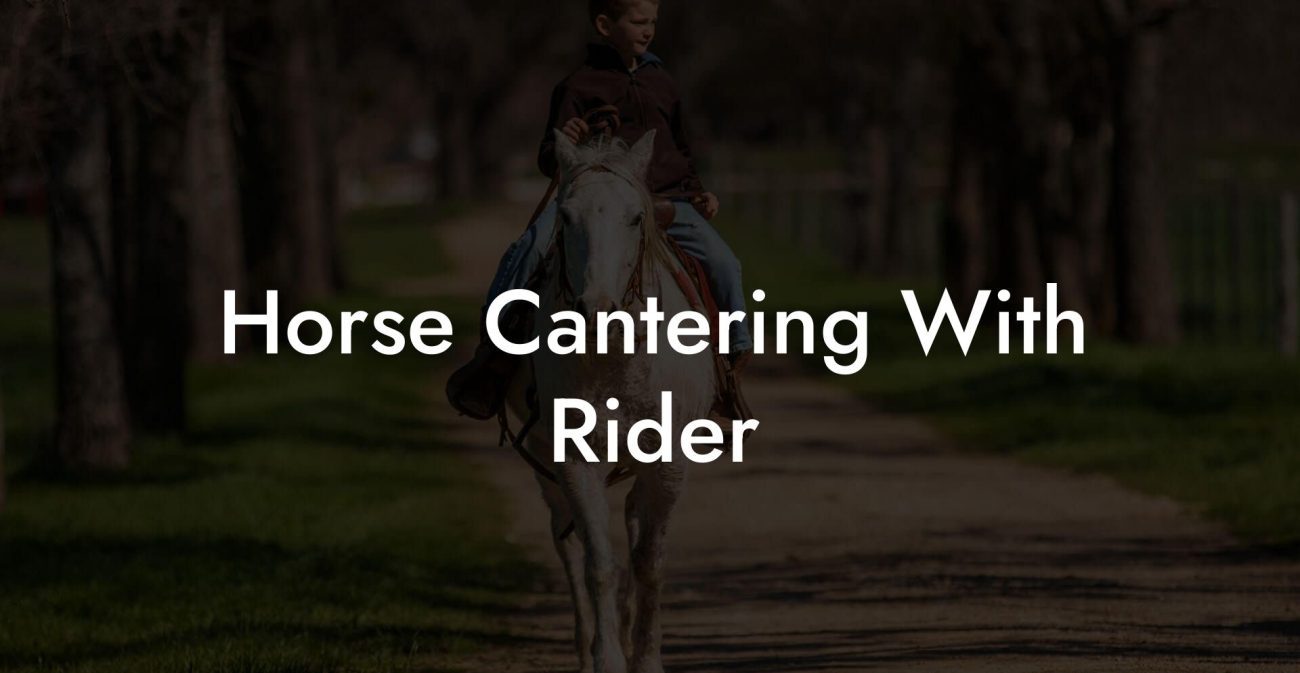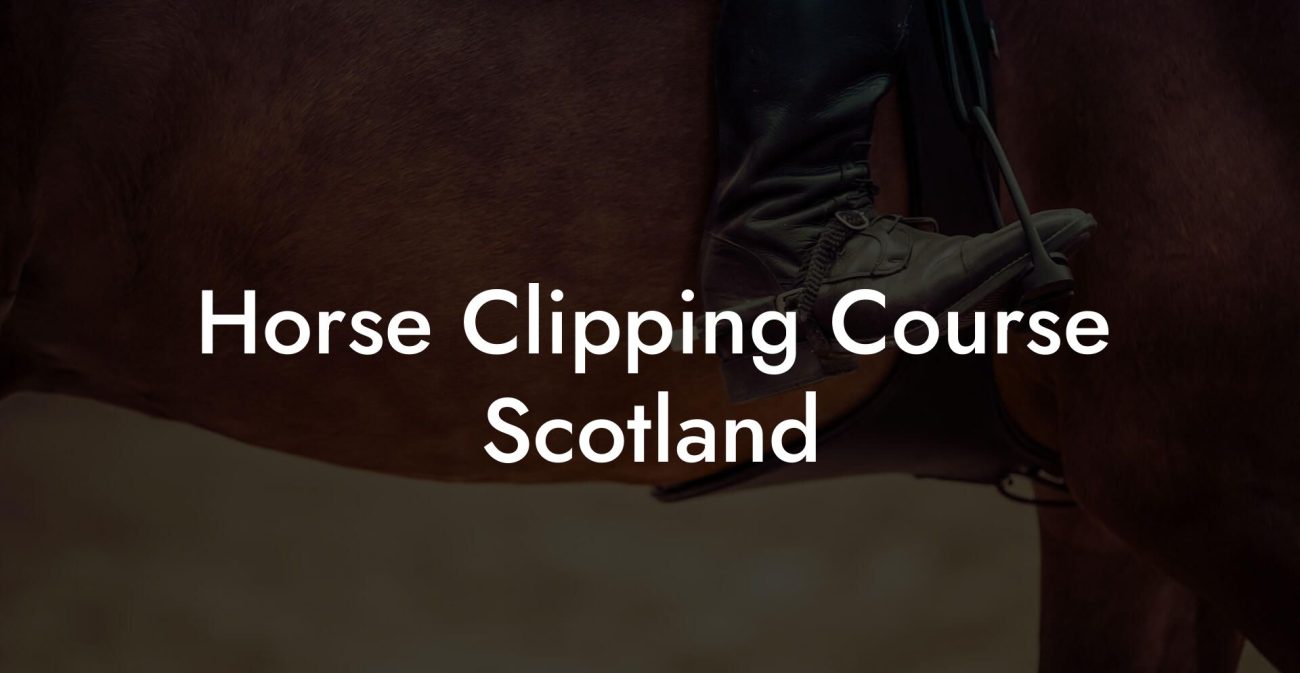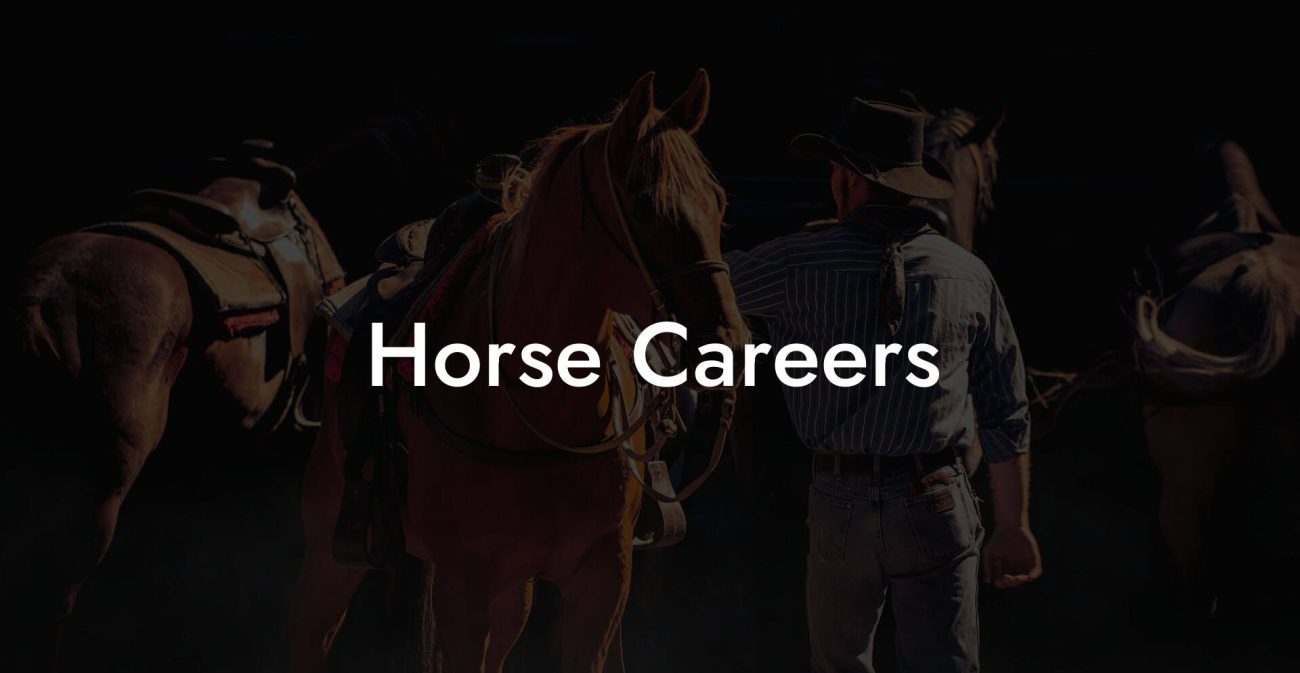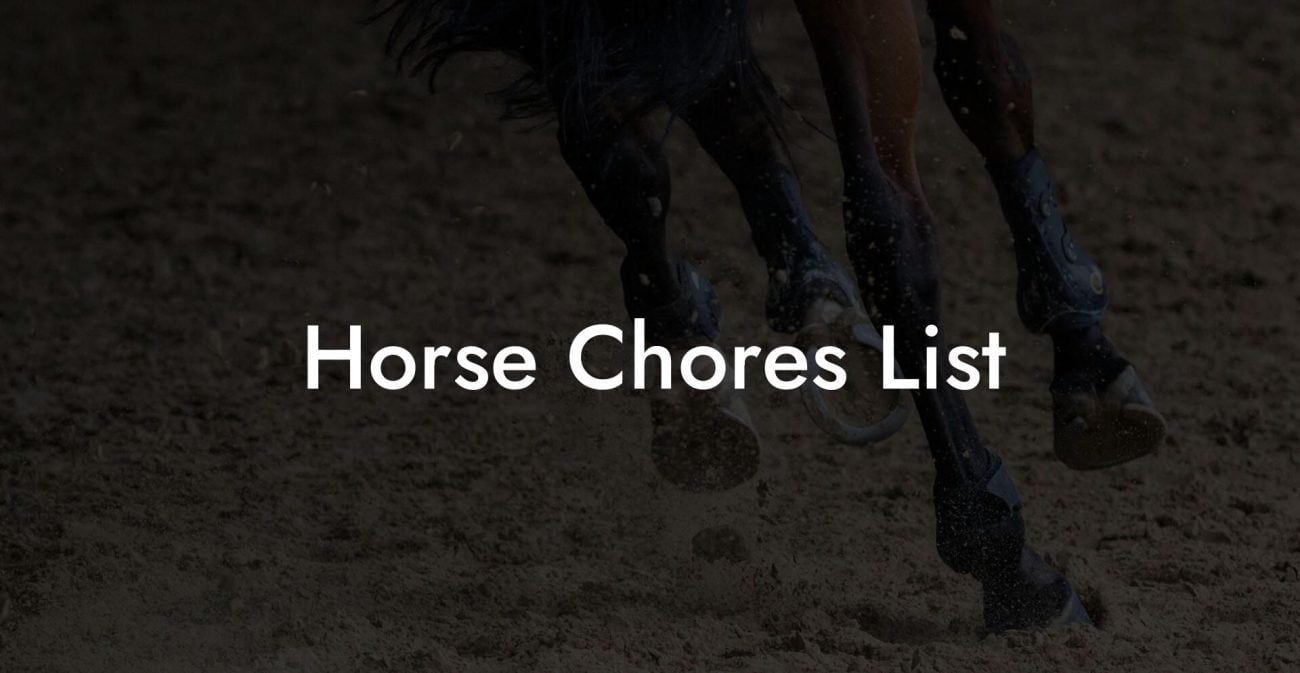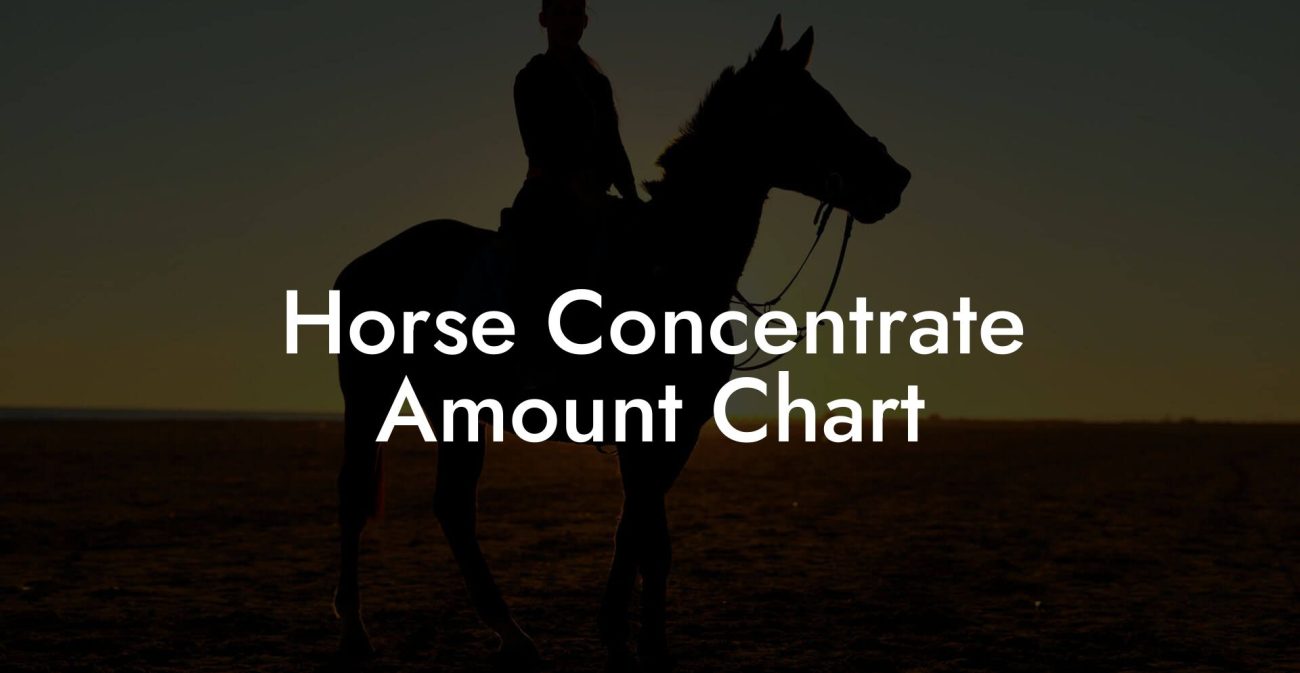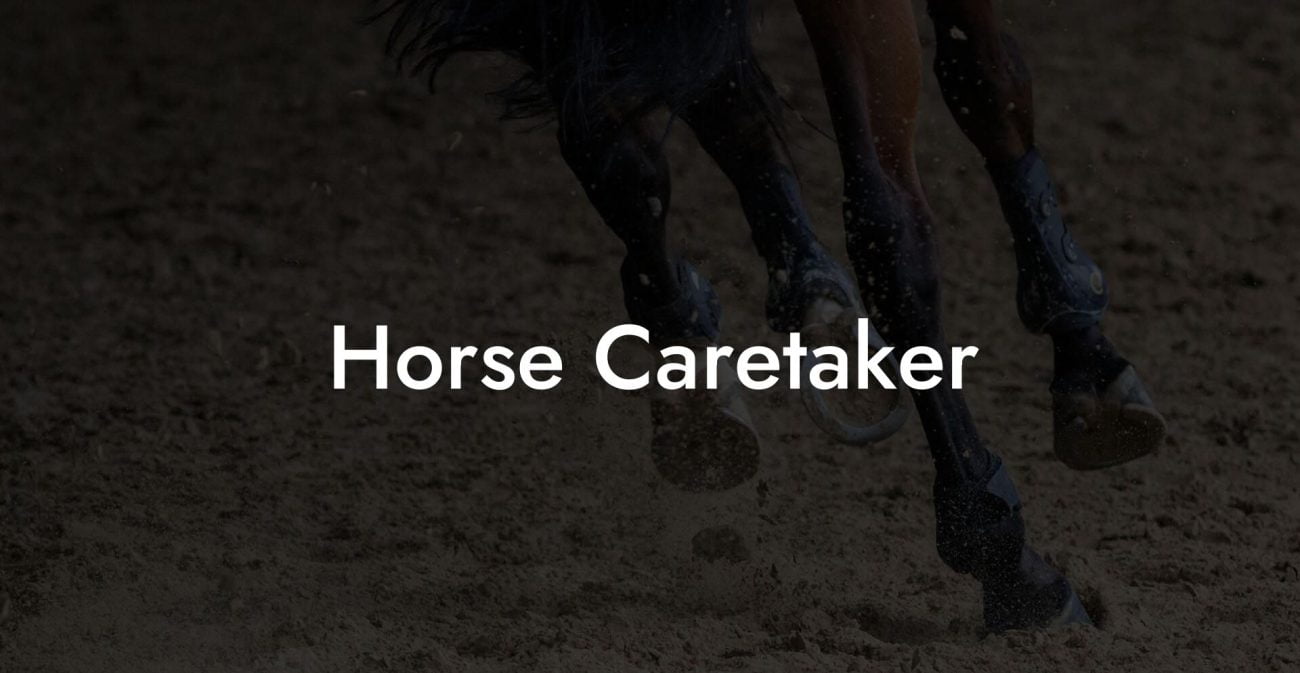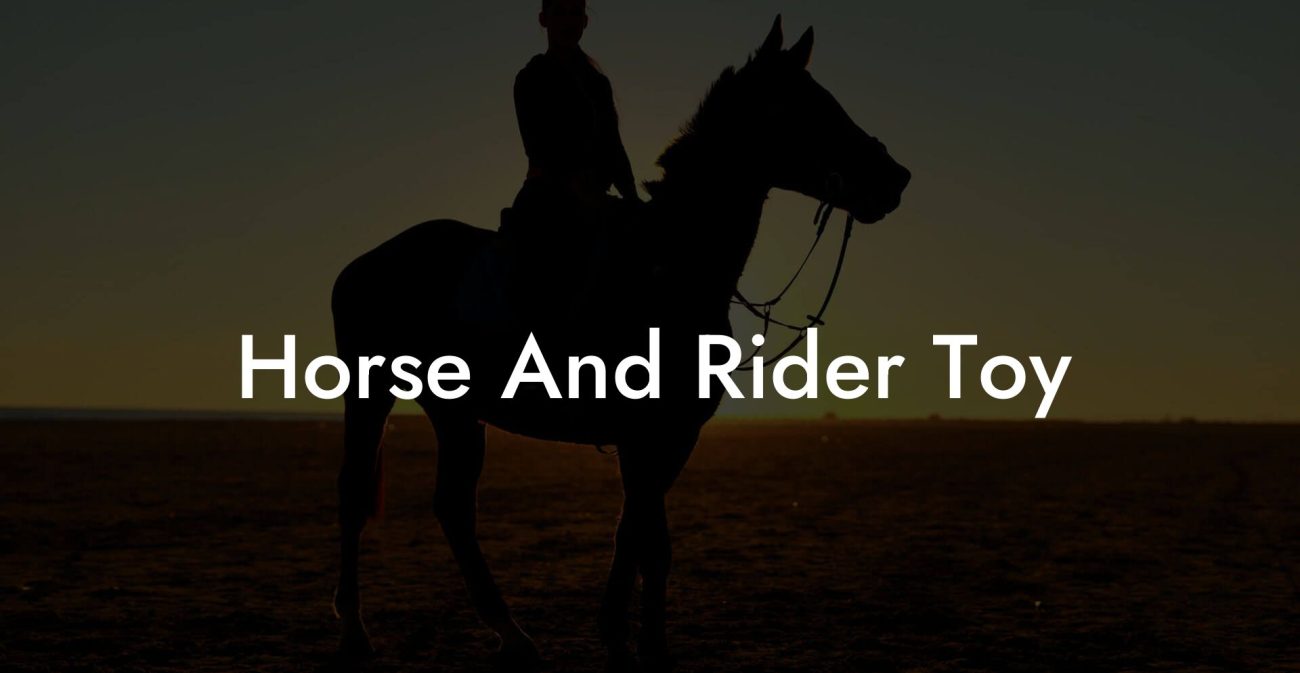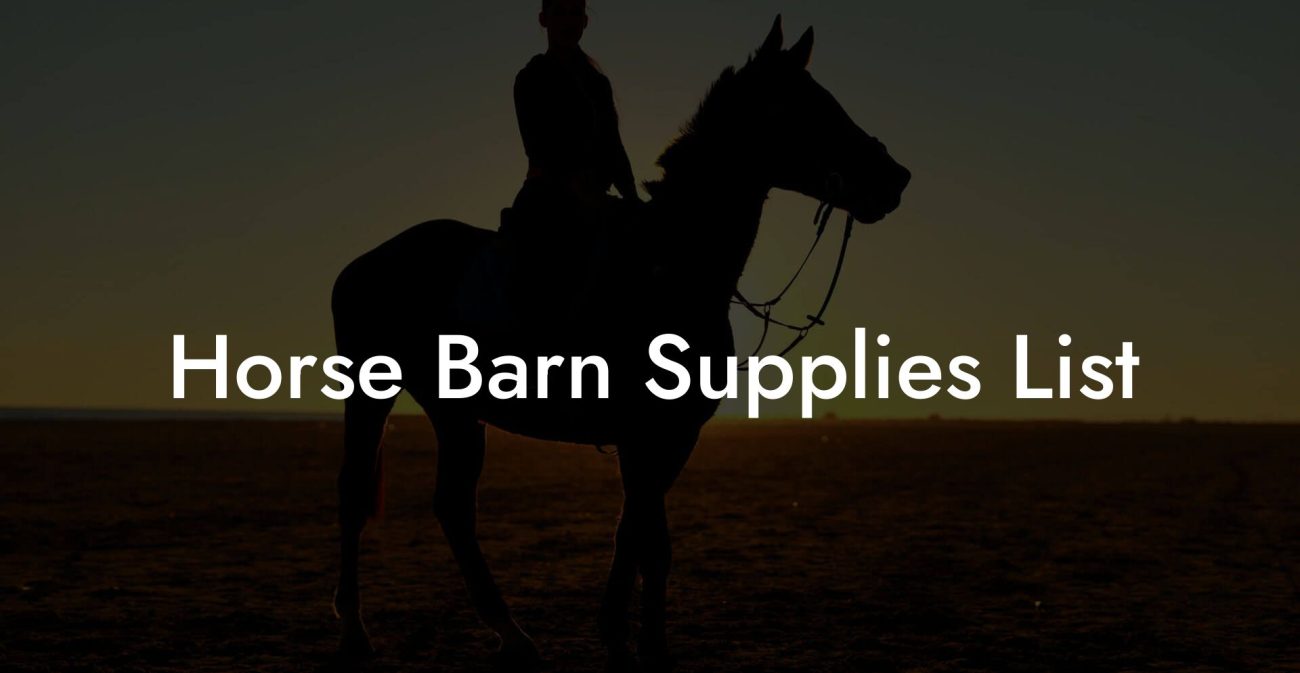Ever had one of those moments when you hear the unthinkable: "When a horse breaks a leg"? It’s not the twist on a Shakespearean idiom you were expecting, but rather a full-throttle emergency that sends your heart racing and your brain scrambling for solutions. Whether you’re a seasoned equestrian or a series-of-memes-loving millennial admiring these majestic creatures from afar, this comprehensive guide is your go-to manual for navigating the high-stakes world of equine injuries with humor, heart, and a dash of Gen-Z swagger.
Quick Links to Useful Sections
- Understanding Equine Leg Injuries: More Than Just a Bad Day at the Ranch
- Immediate Steps: What to Do When a Horse Breaks a Leg
- Transporting Your Injured Horse: A Delicate Balance of Care and Calm
- Emergency Veterinary Care: What to Expect During the First 24 Hours
- Treatment Options: Surgery vs. Conservative Management
- Rehabilitation and Recovery: Guiding Your Horse Back to Health
- nutrition and Supplementation: Fueling the Healing Process
- Integrative and Holistic Approaches to Equine Recovery
- Acupuncture and Equine Chiropractic Care
- Massage Therapy and Myofascial Release
- Herbal Remedies and Natural Supplements
- Emotional and Psychological Support for Both Horse and Owner
- Preventative Measures: How to Lower the Risk of Future Injuries
- Crafting a Personalized horse care Plan: Your Roadmap to Resilience
- Step 1: Detailed Veterinary Assessment
- Step 2: Goal Setting and Action Planning
- Step 3: Multidisciplinary Integration
- Step 4: Daily Routine and Monitoring
- Step 5: Flexibility and Adaptation
- Equine Recovery Case Studies: Real-Life Stories of Resilience
- Case Study 1: Bella’s Brave Battle Back
- Case Study 2: Duke’s Do-It-Yourself Recovery
- Case Study 3: The Comeback of Starfire
- Resources and Community Support: Your Next Steps
- Equine Safety Innovations: Tools to Keep Your Horse in Top Shape
- Equine Wellness Beyond the Injury: Creating a Long-Term Care Routine
- Equine Emergency Preparedness: Being Ready for the Unexpected
- Horse Care FAQ: Your Burning Questions Answered
- Your Journey to Empowered Equine Recovery
Understanding Equine Leg Injuries: More Than Just a Bad Day at the Ranch
Horses are built for speed, strength, and grace. Their legs are masterpieces of evolution, tendon by tendon, bone by bone, a wonder of nature engineered for sprinting across open fields. But what happens when that finely tuned machine suffers a catastrophic failure? When a horse breaks a leg, it isn’t simply a matter of a clumsy stumble; it’s a serious, often life-threatening event that requires immediate and expert intervention.
Equine leg injuries can range from stress fractures and splint bone complications to full-blown fractures that require surgical intervention. The anatomy of a horse’s leg is delicate: each bone, ligament, and tendon works in harmony. When one component falters, the network goes into overdrive trying to compensate, and that’s when the trouble starts.
In this section, we’ll dig into the what’s, why’s, and how’s of equine leg injuries. We’ll discuss the different types of fractures, the factors that contribute to injury (including overuse and traumatic accidents), and why a broken leg is as serious for a horse as a broken heart is for us.
Immediate Steps: What to Do When a Horse Breaks a Leg
Time is of the essence when your horse sustains a leg injury. The initial moments can feel like they’re being filmed for an action movie, adrenaline soars, and you’re locked in fight-or-flight mode. Here are the crucial steps to follow when disaster strikes:
- Stay Cool and Assess the Situation: Panic won’t fix a fracture. Take a few deep breaths, assess your environment, and quickly identify any hazards.
- Secure Your Horse: Ensure your injured equine friend is in a safe space away from other animals or hazards. Use gentle restraints if necessary.
- Call Your Veterinarian Immediately: Time-sensitive intervention is critical. A veterinarian specializing in equine medicine is your best ally in this emergency.
- Avoid Moving the Horse Excessively: Unnecessary movement can worsen the injury. If transportation is required, be sure to take extra care.
- Gather Relevant Information: Take note of the incident details, how the injury occurred, and any visible signs of distress. This info can be invaluable for the vet.
Following these steps promptly can make a world of difference. Being technologically savvy means even using your smartphone to quickly research emergency protocols or to videograph the injury for your veterinarian might help in making informed decisions on the fly.
Transporting Your Injured Horse: A Delicate Balance of Care and Calm
Once you’ve made the critical call and stabilized the situation, the next step is safely transporting your horse to a veterinary facility. This isn’t a casual road trip, it’s a high-stakes operation that demands precision and care.
First and foremost, choose a transport method that minimizes jostling. Specialized equine trailers with padded interiors are ideal, as they reduce shock and stress during transit. If you’re on the road with your tractor-trailer conversion or a rented van, make sure the horse is securely fastened and that the ride is as smooth as possible.
Communicate clearly with your veterinary team during transport. Share updates about your horse’s condition, and don’t hesitate to ask for extra support or recommendations if you’re in unfamiliar territory.
Remember, your calm and collected demeanor can be a soothing balm for your horse. A friendly voice, soft touches, and reassuring words can help keep your equine companion as relaxed as possible during this stressful journey.
Emergency Veterinary Care: What to Expect During the First 24 Hours
When you finally roll into the emergency veterinary facility, a team of specialists will spring into action. The first 24 hours are all about diagnosis, stabilization, and crafting a game plan for recovery.
Your vet will likely start with a thorough physical exam and imaging tests, X-rays and possibly even advanced imaging like CT scans, to pinpoint exactly where and how the injury occurred. Expect the diagnosis phase to be fast-paced, as every minute can be crucial in preventing further damage.
Treatment options may vary: some injuries might be managed conservatively with immobilization and supportive care, while others may necessitate surgical intervention. The vet will explain the pros, cons, and potential risks associated with each approach, ensuring you’re as informed as possible before any decisions are made.
It’s also a good idea to discuss pain management and anti-inflammatory measures at this early stage. Modern veterinary medicine offers a suite of medications and therapies designed to keep your horse comfortable while promoting recovery.
Treatment Options: Surgery vs. Conservative Management
Just like in human medicine, equine leg injuries can be treated using a spectrum of methods, from high-tech surgical interventions to more conservative approaches. Deciding on the best treatment involves evaluating your horse’s overall health, the nature of the injury, and potential long-term outcomes.
Surgical Intervention: Surgery is often the go-to option for severe fractures. Techniques such as internal fixation (using plates, screws, or pins) stabilize the broken bone. Advances in veterinary surgical procedures have drastically improved the prognosis for horses with complex fractures. However, surgery is not without risks, there can be complications like infection, implant failure, or prolonged recovery times.
Conservative Management: For less severe injuries, your vet might recommend a non-surgical approach. This could include strict stall rest, external support like casts or splints, and controlled exercise regimens. The goal here is to allow the bone to mend naturally while minimizing further stress on the injury site.
Many factors influence the treatment decision, including the horse’s age, performance level, and potential for a full recovery. Whether your horse is a beloved ranch companion or a star in competitive events, the right treatment plan is customized to your situation.
Rehabilitation and Recovery: Guiding Your Horse Back to Health
Rehabilitation is where the long game begins. Once the initial treatment phase is over, the focus shifts to restoring mobility, strength, and confidence in your horse. Equine rehab isn’t just about mending a broken leg, it’s about rebuilding a partnership between you and your majestic steed.
The rehabilitation process typically involves a gradual return to movement and exercise. Initially, this might mean limited turnout in a controlled arena; eventually, your horse will return to more dynamic activities under strict supervision. Techniques such as controlled walking, passive range-of-motion exercises, and hydrotherapy (swimming or water treadmill sessions) can be invaluable.
Modern equine rehabilitation also emphasizes the importance of a multidisciplinary approach. Alongside your veterinarian, a team of equine physiotherapists, farriers, and nutritionists may collaborate to craft a recovery plan that is as holistic as it is effective.
Throughout rehab, monitoring progress is key. Regular check-ups, imaging tests, and even pressure-sensitive pads in stalls can help track improvements. With patience, consistency, and a little bit of that signature millennial grit, your horse can overcome even the toughest of setbacks.
nutrition and Supplementation: Fueling the Healing Process
Just as athletes require the right fuel for peak performance, a recovering horse needs optimal nutrition to mend bones and muscles. Nutrition is a cornerstone of rehabilitation, influencing everything from inflammation control to energy levels.
Anti-Inflammatory Foods: Think of fresh, high-quality hay, antioxidant-rich forages, and specialized feed blends that reduce inflammation. Omega-3 fatty acids, which you might find in flaxseed or fish oil supplements, can be particularly helpful in promoting recovery.
Protein and Minerals: Lean proteins and essential minerals like calcium and phosphorus help repair and build bone tissue. Incorporating supplements that support joint health, like glucosamine and chondroitin, can also be beneficial.
Hydration Matters: Always ensure your horse has constant access to clean, fresh water. Adequate hydration supports not only muscle function but also the overall healing environment within the body.
A consultation with an equine nutritionist can help tailor a feeding regimen that aligns perfectly with your horse’s unique recovery needs. Remember: what goes into your horse’s feed table can be just as important as a steady regimen of physical therapy.
Integrative and Holistic Approaches to Equine Recovery
While traditional veterinary interventions form the backbone of recovery, many horse owners are turning to integrative and holistic practices to elevate the healing journey. These approaches tap into natural and alternative therapies, adding another layer of care that addresses both physical and emotional well-being.
Acupuncture and Equine Chiropractic Care
Acupuncture isn’t just for humans, it’s increasingly popular in the equine world. By stimulating specific points on the body with thin needles, acupuncture can help reduce pain, encourage blood flow, and promote faster healing. Similarly, equine chiropractic care aims to realign the body and help remove blocks in the nervous system, ultimately improving overall function.
Massage Therapy and Myofascial Release
Just as we might opt for a massage after a grueling workout, horses can benefit enormously from gentle massage therapy. This technique helps alleviate muscle tension, reduce swelling, and can even improve circulation near the injury site. Myofascial release, a specialized method of relieving tension in the connective tissue, can be particularly beneficial in preventing scar tissue from restricting movement.
Herbal Remedies and Natural Supplements
Think of herbal remedies as nature’s little helpers. Ingredients like turmeric, ginger, and boswellia are known for their anti-inflammatory properties, and natural supplements tailored for horses can ease discomfort and encourage healing without the heavier side effects sometimes found in pharmaceuticals. Always work closely with your vet before introducing new supplements.
Integrative therapies provide a well-rounded, holistic approach to equine recovery. They complement the more conventional methods, offering your horse a path to healing that nurtures both body and spirit.
Emotional and Psychological Support for Both Horse and Owner
An injury isn’t just a physical setback, it’s a mental and emotional challenge, too. When a horse breaks a leg, the emotional toll on both the animal and its caretaker can be immense. You might find yourself caught in a whirlwind of guilt, sadness, or anxiety, wondering if you could have done something differently.
For your horse, the sudden change in routine and the pain associated with an injury can lead to stress and behavioral shifts. It’s important to provide extra love, gentle reassurance, and plenty of calm interactions. Soft music in the stables, quiet time with familiar companions, and a routine that minimizes stress can help foster a nurturing environment.
Likewise, don’t ignore your own mental health. Lean on supportive friends, veterinary professionals, and online communities of fellow horse enthusiasts who understand the roller coaster of emotions that come with an equine emergency. Self-care, through mindfulness or even just an honest conversation, is key to weathering these turbulent times.
Preventative Measures: How to Lower the Risk of Future Injuries
While there’s no surefire way to guarantee that accidents won’t happen, several proactive steps can help reduce the risk of injury. Prevention is always better than cure, and many preventative measures are as simple as making small adjustments to your daily routine and the environment your horse inhabits.
Proper training Techniques: Whether you’re teaching your horse new maneuvers or preparing for competitive events, proper training can prevent undue stress on the legs. Incorporate a blend of strength, mobility, and balance exercises to ensure your horse’s body is resilient and responsive.
Safe riding Practices: Riding isn’t just an art, it’s a science. Modern riding equipment designed with ergonomics in mind can distribute weight more evenly and minimize impact. Remember, even the most seasoned rider can benefit from a reminder to keep it safe and smooth.
Environmental Adjustments: Turn your stable and paddock into a haven. Regularly inspect your riding arena and pasture for hazards like slippery surfaces, uneven ground, or debris that might contribute to a fall.
Regular Health Check-ups: Proactive veterinary care, including periodic X-rays and joint assessments, can help catch issues before they escalate. Regular monitoring means potential injuries are identified and managed at their earliest stage.
Integrating these preventative strategies into your routine isn’t just about keeping your horse safe, it’s about building a partnership that thrives on mutual care and respect.
Crafting a Personalized horse care Plan: Your Roadmap to Resilience
Just like every human has a unique health journey, each horse’s needs and personality demand a tailored care plan. After a leg injury, constructing a personalized recovery and maintenance plan becomes your north star, a clear guide to support both healing and long-term performance.
Step 1: Detailed Veterinary Assessment
Kick things off with an in-depth evaluation by your trusted veterinarian. A comprehensive exam will help determine the extent of the injury and highlight any underlying conditions that need addressing.
Step 2: Goal Setting and Action Planning
Collaborate with your vet and rehab specialists to define short-term and long-term goals. Do you want to get your horse back into light training? Are you aiming for full recovery with minimal re-injury risk? Establish clear, measurable milestones.
Step 3: Multidisciplinary Integration
Incorporate elements such as physical therapy, integrative treatments (like acupuncture or massage), and specialized nutrition plans. This multifaceted approach ensures that every aspect of your horse’s well-being is covered.
Step 4: Daily Routine and Monitoring
Structure your day with dedicated time slots for rest, therapeutic exercises, and emotional bonding. Use digital tools or a good old journal to log each session, noting any advancements or setbacks.
Step 5: Flexibility and Adaptation
Your care plan should be dynamic. As your horse heals and regains strength, it’s vital to adjust the regimen in response to progress and changing needs. Continuous evaluation ensures that the plan remains effective and responsive.
With a detailed, personalized plan, the journey from injury to full recovery is not only manageable but also empowering. Your proactive involvement sets the stage for a vibrant comeback.
Equine Recovery Case Studies: Real-Life Stories of Resilience
Nothing illustrates the power of a comprehensive recovery plan better than real-life examples. Let’s take a look at some journeys where a mix of conventional care, integrative therapies, and plain old love made all the difference.
Case Study 1: Bella’s Brave Battle Back
Bella, a spirited mare known for her racing prowess, suffered an unexpected leg fracture during a routine training session. Initially, the prospects seemed bleak. However, with an emergency surgery followed by a rigorous rehabilitation program including physical therapy sessions, acupuncture treatments, and a carefully curated anti-inflammatory diet, Bella began her journey back to the racetrack. Today, Bella trots with renewed vigor, a true testimony to the power of integrative care.
Case Study 2: Duke’s Do-It-Yourself Recovery
Duke, a beloved family horse, encountered a stress fracture that threatened his everyday adventures in the paddock. The owners quickly adopted a conservative management plan enriched with gentle massages, controlled walking routines, and regular check-ups. By integrating herbal supplements and careful nutritional planning, Duke not only healed but also discovered a new zest for life. His story serves as a reminder that even conservative approaches, when executed with precision, can yield remarkable results.
Case Study 3: The Comeback of Starfire
Starfire, an award-winning show horse, faced a major setback when a severe fracture nearly ended her competitive career. With the emotional support of her dedicated owners and the expertise of a specialized equine rehabilitation team, Starfire underwent surgery followed by an intensive recovery regimen. Hydrotherapy sessions, Pilates-inspired stretching routines suitable for horses, and advanced biofeedback monitoring cemented her comeback. Today, Starfire dazzles audiences once again, inspiring fellow equestrians along the way.
These case studies aren’t just tales of survival, they’re stories of recovery, resilience, and the extraordinary bond between horse and caretaker. They remind us that with the right strategies in place, even the most daunting challenges can lead to hopeful new beginnings.
Resources and Community Support: Your Next Steps
Facing a situation where your horse has broken a leg is challenging, but you’re not alone. There is a robust network of resources, experts, and online communities eager to share advice, experiences, and support. Whether you’re seeking innovative recovery solutions, nutritional tips, or simply a sympathetic ear, you can find it all in various forums and groups dedicated to equine care.
Explore online resources that offer up-to-date research, webinars with veterinary specialists, and interactive platforms where you can ask questions and receive real-time feedback. Many equine rescue organizations, veterinary colleges, and specialized equestrian groups host events and discussion boards that cater to both novice owners and seasoned experts.
Community support isn’t just practical, it’s also therapeutic. Sharing your journey with others who’ve been down the same rocky path can be an incredible source of comfort and inspiration. Engage with local equestrian clubs, and consider joining social media groups that celebrate the triumphs and challenges of caring for horses. After all, sometimes, the best medicine is a good conversation with someone who truly understands your ride.
Equine Safety Innovations: Tools to Keep Your Horse in Top Shape
Modern technology isn’t just for your smartphone, it’s also making waves in the equine world. From smart collars that monitor vital signs to pressure-sensing pads in stables that alert you to abnormal movement patterns, an array of innovative tools are now available to help prevent injuries and promote timely intervention.
Many state-of-the-art equine devices are geared towards predictive analytics. For example, sensors can now track a horse’s gait and detect subtle changes that might signal an impending problem before it turns into a full-blown injury. This technology is a game-changer for forward-thinking horse owners who want to catch issues before they escalate.
Investing in such technologies not only helps in the early detection of potential injuries but also gives you peace of mind. Knowing that advanced technology is keeping a vigilant watch over your horse allows you to focus on other aspects of her care.
Equine Wellness Beyond the Injury: Creating a Long-Term Care Routine
A broken leg is just one chapter in your horse’s journey. What comes next is ensuring that she remains healthy and happy for the long haul. Long-term care goes beyond immediate recovery; it’s all about weaving wellness into everyday routines.
Develop a sustainable care plan that incorporates regular check-ups, ongoing physical therapy, nutritional adjustments, and mental enrichment. Routine activities such as gentle trail rides, group turnout with other horses, and varied exercise regimens will bolster her overall health. Additionally, seasonal adjustments to her diet and exercise schedule can account for changes in weather and energy levels.
Think of long-term equine wellness as a lifestyle. The more seamlessly these practices blend into your daily routine, the better your horse will perform, not only physically, but emotionally too. Empower yourself with knowledge and support, and keep those communication lines open with your veterinary and rehabilitation teams.
Equine Emergency Preparedness: Being Ready for the Unexpected
While we all hope that our horses stay healthy and injury-free, being prepared for emergencies is a cornerstone of responsible horse ownership. Equip yourself with a well-stocked first aid kit designed for equines, familiarize yourself with basic rescue techniques, and have the contact details of emergency veterinary services at your fingertips.
Consider running regular emergency drills with your stable crew. Just like fire drills in schools, a quick run-through of emergency procedures can make all the difference when every second counts. Whether it’s ensuring your trailer is in tip-top condition or having a plan for evacuating your horse from inclement weather or other unforeseen circumstances, preparation is your best defense.
By taking proactive steps now, you’re not only safeguarding your horse's well-being, but also cultivating a culture of readiness and resilience that benefits your entire equine community.
Horse Care FAQ: Your Burning Questions Answered
Below are some frequently asked questions to help you better understand the ins and outs of caring for a horse when a leg injury occurs.
1. What are the most common causes of equine leg injuries?
Injuries can result from overuse, accidents during training or competition, uneven footing, and sometimes even genetic factors. Regular assessments and proper training techniques can help reduce the risk.
2. How do I know if my horse’s leg injury is severe enough for surgery?
A qualified veterinarian will use imaging tests such as X-rays or CT scans to assess the severity. If the fracture is displaced or unstable, surgery is generally recommended.
3. What does the recovery process typically involve?
Recovery involves a combination of pain management, immobilization or surgical stabilization, structured rehabilitation, nutritional support, and sometimes integrative therapies like massage or acupuncture.
4. How long does it usually take for a horse to recover from a broken leg?
Recovery timelines vary widely depending on the injury’s severity and treatment method. It might take anywhere from several months to over a year for a full recovery.
5. Can my horse return to competition after a severe leg injury?
Many horses do make a full comeback with the right combination of surgery, therapy, and emotional support. However, each case is unique and should be evaluated individually.
6. Is it safe to use integrative therapies like acupuncture during recovery?
Yes, many owners incorporate acupuncture, massage, and herbal supplements to complement conventional treatments. Always consult with your veterinarian before starting any new therapy.
7. How important is a proper diet during the recovery process?
Nutrition is critical in aiding recovery. A balanced diet containing anti-inflammatory foods, lean proteins, and adequate hydration supports muscle repair and overall health.
8. What immediate steps should I take if I suspect my horse has broken a leg?
Remain calm, secure your horse, contact your veterinarian immediately, and avoid unnecessary movement to prevent exacerbating the injury.
9. Are there technology tools that can help monitor my horse’s recovery?
Yes, innovative tools such as smart collars, pressure-sensing mats, and mobile health apps can help track your horse’s progress during rehabilitation.
10. How can I prevent future injuries once my horse has recovered?
Implementing proper training techniques, maintaining a safe environment, and having regular veterinary check-ups are key strategies in minimizing future risks.
Your Journey to Empowered Equine Recovery
When a horse breaks a leg, it’s more than just a physical injury, it’s an emotional roller coaster, a test of resilience, and ultimately, an opportunity to transform challenges into accomplishments. By arming yourself with practical knowledge, integrating conventional care with holistic therapies, and forging a supportive community, you set the stage for a triumphant comeback.
Embrace each step of this journey with optimism and determination. Celebrate the small victories along the way, from the first signs of improved mobility to the day your horse trots freely once again. Every exercise session, each carefully planned meal, and every moment of shared understanding between you and your horse plays an integral role in their recovery.
The path may be long, but with proper care, the right expertise, and a compassionate, down-to-earth approach, your horse can emerge stronger than ever. Let this guide serve as your roadmap, a blend of science, heart, and a healthy dose of humor, as you navigate the challenges and triumphs of equine care.
Remember, your journey to empowered equine recovery is just beginning. Equip yourself with knowledge, lean on experts, and trust in the resilience of your majestic companion. Together, you will conquer every hurdle and gallop toward a future filled with health, happiness, and endless adventures.


